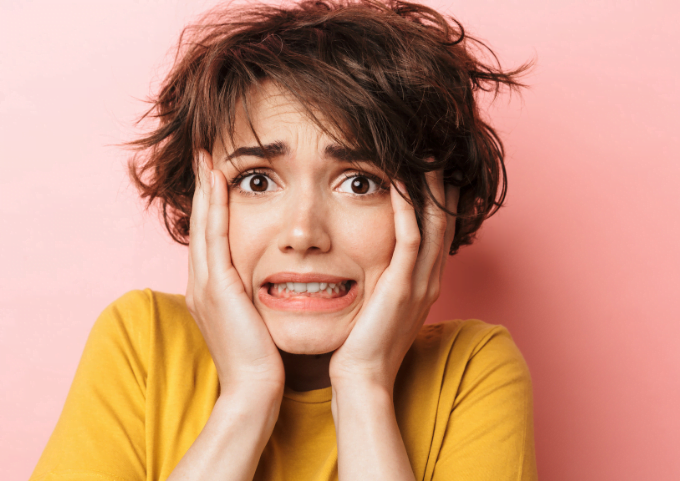If you’re just getting started, your instinct might be to lean towards teaching beginner piano students first. After all, those students are just starting too – so how hard can it be?
Teaching piano to beginners actually requires great skill and care. In this article, we’ll take an overview of all the areas you need to consider.

⬆️ Listen to the podcast above or keep on reading, whichever fits your style. ↙️
Teaching piano to beginners is a big responsibility. The foundations you lay now affect the role music plays in their life for years to come.
So, no pressure…but really? Some pressure.
I don’t want to undersell this. Teaching beginner piano students is often taken on too lightly by beginner teachers.
But beginners are actually the most difficult students to teach.
You need to consider many factors when teaching beginner piano students which are a non-issue with those who already have the foundations.
- What approach will you take to technique?
- How will you teach reading?
- How will you encourage them to be creative?
- What will you do to support their practice routine?
And so so much more. My goal with this post is that you come away with a broad-brush understanding of what goes into teaching a beginner student.
If you are new to teaching and want more thorough training to get started, you can find our in-depth Foundations of Piano Teaching course inside Vibrant Music Teaching (among many other teaching courses.)
Members can access the Foundations of Piano Teaching course right now in the VMT Courses Library.
Not a member yet? Check out all the benefits and resources you’d have at your fingertips if you join.
What You Need to Teach Beginner Piano Students
There are many elements to great piano lessons when you teach beginners. I won’t attempt to tell you that this list is exhaustive. 🤥
But I do think it’s useful to zoom out so that you can look at some of the different areas you’ll need to cover with your beginner piano students.
Reading
If you’ve had traditional piano lessons yourself this one is probably the most obvious. Of course, you’re going to teach your beginner piano students to read!
Teaching reading skills means a lot more than just note naming sheets, however. As you get started, do some research on reading by intervals and compare the different methods available.
Rote pieces
“Rote” pieces might sound like a dirty word to you, but the piano teaching world has been waking up in recent years to the value of teaching by rote.
The pieces which are designed to be taught by rote are highly patterned and tend to be easier to play than they would be to read (think G flat major). Rote pieces can also provide wonderful opportunities for teaching technique and creativity.
Improvisation
If you don’t teach beginner piano students to improvise, you’re locking them out from a whole world of music-making.
Sure, you might not have been taught to improvise when you were growing up. You might even be pretty terrified of improvisation right now.

Just think how confident you would be at improvising if it were made normal from the very first lesson. Give your students that gift.
Composition
I don’t consider composing as essential as improvising…but it’s a wonderful thing to include if you teach beginner piano lessons.
My own students all compose a piece every year, which we put together in a book as a memento. Even if they start lessons a week before this project begins in the spring, they still take part. Think about the message that sends them about what music is and who creates it.
Technique
Teaching great technique should be a given. This is one of the biggest differences between your student learning piano from YouTube and from a real human (AKA you!)
Too many teachers fail to teach technique at all. They teach technical exercises like scales, but not the mechanics of playing and how to develop healthy pianistic habits. You can change that tide.
Technical Exercises
Technical exercises are things like scales, arpeggios, chord drills, Dozen a Day, Czerny, Hanon, etc. etc.
I think it’s essential to teach beginner piano students the scales and chords so that they understand how music is built. Personally, I prefer to leave this until the second year for most children but you should do your research on this front as there are many opinions on the structure and pacing.

BECOME A BETTER MUSIC TEACHER.
HAVE MORE FUN.
Get the resources and support you need to teach confidently and feel fulfilled in our Vibrant Music Teaching membership.
Ear Training
Don’t forget your students’ ears. It’s wild to think that aural work is often crammed in at the last second before a piano exam or not taught at all. If that’s what your experience was growing up, please do not pass it on.
Just think about it: Music is meant to be heard. 👂
Theory
Teaching theory doesn’t need to equate to written theory homework. That might be something you include, but it’s not the whole picture.

Solid music theory foundations are one of the best things you can do for your beginner students. I can’t tell you the number of transfer students I’ve had who can’t actually name or find certain piano keys or other such basic concepts.
You must actively teach music theory and make a plan for it. Don’t leave your student to maybe figure it out.
Practice
Last but very much not least, you need to teach your students how to practice.
Students need practice skills and strategies to take into their home practice routines so that they’re not simply starting a piece from the beginning, playing through a few times and calling it a day. Maximise your students’ chances of success by giving them the tools they need.
How to Teach Beginner Piano Lessons
Once you know what you’re going to teach beginner piano students, you need to get into how to teach it to them.
It’s not as simple as pointing at a time signature, explaining that it means there are 4 beats in a bar and off they go. Real teaching requires real thought and dedication.
Piano Method Books
Method books are a great tool for new teachers to study and use, but they do not contain everything.
Think of the method book as your reading book, for the most part. It can help provide reading material (and some other teaching ideas depending on the series) but it should not be all that you teach.
Piano lessons are not music reading lessons.
Musicianship Supplements
Alongside the piano method book, it may be useful for you to have another resource which incorporates more of the lesson elements we discussed above.
There are a few of these out there, and we have our own inside Vibrant Music Teaching. The Tiny Finger Takeoff and Piano Powerbooster plans bring together technique, theory, aural and improvisation into an easy to follow set of lesson plans to use with any method book. Watch this intro video to find out more about Piano Powerbooster.
Members can instantly access Tiny Finger Takeoff, Piano Powerbooster 1, Piano Powerbooster 2, and Piano Powerbooster 3 from the VMT Library.
Games and Activities
If you’re new here, there’s something you need to know about me: I love teaching with games and movement. 😍
This is actually why I built the Vibrant Music Teaching membership in the first place. It’s grown to so much more by now, but games are at its heart because I’ve seen how powerful they are for teaching beginner piano students and beyond.
Piano Lesson Formats
Beginner piano lessons don’t have to be one-to-one to be successful. Often group lessons can provide both motivation and support to those just starting out.
If this is something which appeals to you, start researching! There’s a lot to learn in this area and your teaching style will be greatly affected by the lesson format you choose.
No matter the format, it’s crucial to plan your piano lessons ahead of time. Get the latest resources about lesson planning and so much more on my Planning Piano Lessons hub page.
Communication and Teaching Style
As you can tell from all my talk of games and improvisation, my teaching style is all about fun. That doesn’t have to be your style. Either way, your personal method of teaching will develop over time.
The only non-negotiable is great communication.
As you teach beginner piano students for the first time, be conscious of your word choices and how easy your directions are to understand. Aim to be as crystal clear – not just with them, but with their parents as well. Keep learning and be patient.
Becoming a great piano teacher isn’t easy or quick. But it is worth it.
What have you found to be successful in teaching beginner students?
I’d love to hear your thoughts on this in the comments below. 🙂


Planning and teaching lessons for the teenagers who have come up through my studio is a breeze compared to teaching beginners! It takes SO MUCH PLANNING to make sure beginners are receiving the foundations of technique, theory, aural skills, and improv. Each child comes with different music readiness, so there is SO MUCH ADAPTATION that has to be done for each child. Child A may have a great ear for rhythm patterns, but not great fine motor skills. Child B might have wonderful fine motor skills, but can’t keep a steady pulse. In the end, the planning and adaptation is worth it! Students with a solid, well-rounded foundation tend to remain enrolled in piano lessons. Once they’re teens and choosing their own repertoire, I’m just along for the ride to help them when they get stuck. It’s very rewarding to help them reach that point – hopefully that means they will become life-long musicians!